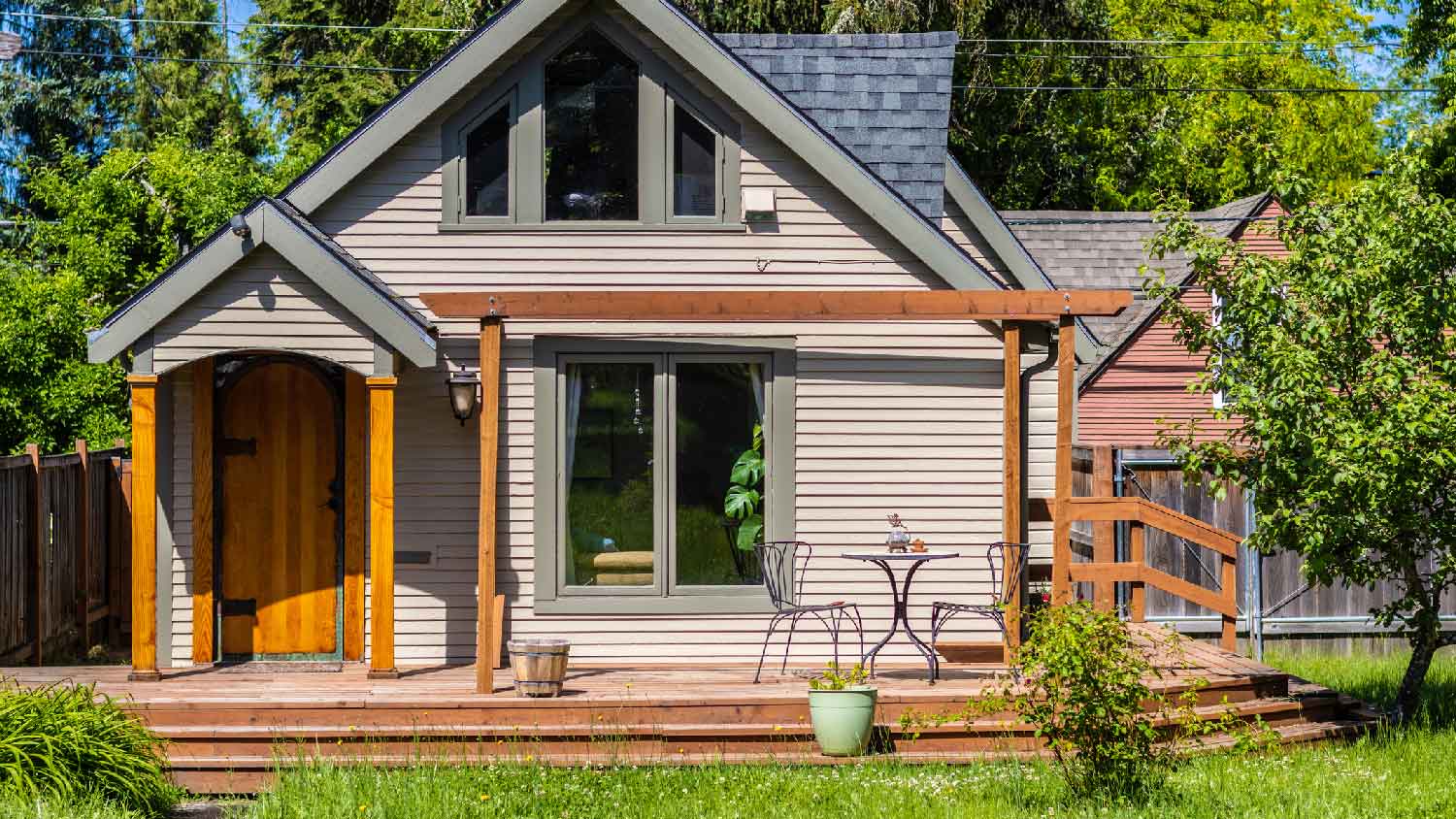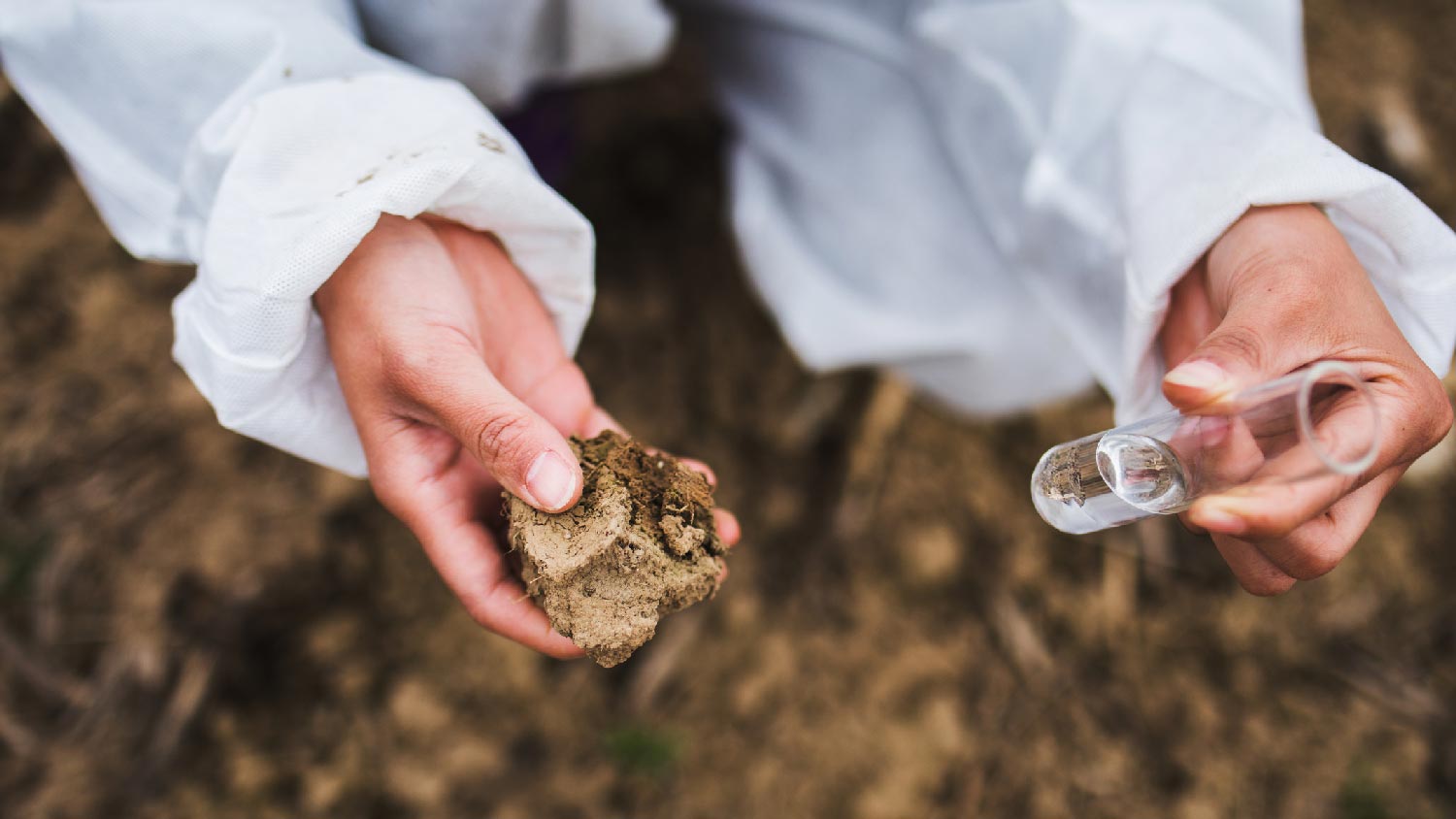
The average cost to connect to a public sewer line in Columbus, OH, depends on the linear footage, piping material, local regulations, and more.
Bigger doesn't always mean better


Your home size, number of residents, and soil quality determine your leach field size.
A perc test analyzes how quickly the soil in the field absorbs water.
Local regulations may affect your leach field size requirement.
Septic leach field size is one of those things you just have to get right. If you go too small, you risk having to deal with a saturated system, and the corresponding "ick." Go too large and you risk wasting valuable yard space. Various factors influence the appropriate leach field size—here's how to figure out what will work for your home.
When taking on this project, expect questions only a pro can answer. With our network of local pros, you'll get the job done and your questions answered—without the hassle and stress of doing it yourself.
The bigger your home, and the more people who live in it, the bigger your leach field should be. The amount of wastewater your home produces daily will play a major role in influencing the appropriate drain field size.
For example, if you alone live in a four-bedroom home you may be able to get by with a smaller leach field compared to a family of five that lives in the same-size home.
Fortunately, calculating the ideal leach field size isn't something you'll need to worry about on your own. You'll need a professional engineer, working with a local septic tank company, to determine the best size for your home's needs.
That said, you can estimate the approximate size of the leach field using two factors: Your home's bedrooms and the percolation rate of the soil. A local septic company can perform a perc test for your septic to see how quickly water moves through the soil on your property.
The test involves digging a hole into the soil, filling it with water, then measuring how quickly it takes the water to drop by one inch. The faster the water moves, the less area you need for your leach field. Clay soil tends to drain more slowly than sandy soil.
| Number of Bedrooms | Square Feet |
|---|---|
| 1 | 165–350 |
| 2 | 330–700 |
| 3 | 495–1,050 |
| 4 | 660–1,400 |
| 5 | 825–1,750 |

A one-bedroom home with a relatively fast percolation rate, between five and 10 minutes per inch, will need the smallest size leach field, at least 165 square feet. Meanwhile, a one-bedroom home with a slower perc rate, between 51 and 60 minutes per inch, can have a drain field that measures 350 square feet.
The appropriate size leach field for a two-bedroom home starts at 330 square feet for the fastest perc rate and goes up to 700 square feet for the slowest.
Three-bedroom homes typically need a leach field of at least 495 square feet and up to 1,050 square feet.
Meanwhile, owners of four-bedroom homes should consider a leach field that's at least 660 square feet and up to 1,400 square feet.
The minimum leach field size for a five-bedroom home is around 825 square feet, with the largest size being around 1,750 square feet.

It's best to leave calculating the size of your septic leach field to the pros. A septic company will be familiar with the requirements based on your home's bedroom count and number of occupants. Septic pros will also be aware of any local regulations and environmental factors that may come into play.

A local septic company will take all of the following into consideration when determining the right drain field size for your home and septic system.
While it's not a fail-proof test, the number of bedrooms in your home often reflects how many people live there and how much daily wastewater is produced. The more bedrooms, the larger the leach field.
How many people live in the house influences how much water is used, which in turn influences the size of the drain field. If your household tends to use more water than the average, it's a good idea to let the septic company know before the project begins.
For example, if you have children or pets, you may need to run the washing machine more frequently. A household with teenagers may use more bath or shower water.
Perhaps the most significant factor in determining the right size leach field is the soil's percolation rate—or perc rate. The type of soil on your property affects the perc rate. For example, clay soil is known for retaining water and will have a much slower perc rate than sandy soil, which lets water pass through quickly.
The ideal perc rate is between five and 60 minutes per inch (MPI). Rates under five MPI are considered too fast, while rates over 60 MPI are too slow. When the perc rate is less than five MPI, wastewater will move too quickly through the soil, not allowing for appropriate filtration. Leach fields with a perc rate over 60 MPI will likely become overwhelmed and saturated.
The size of your leach field should correspond to the size or number of your septic tank (or tanks). Usually, the bigger your tank or the more tanks you have, the larger your drain field will need to be.
Different localities may have different requirements regarding drain field size. Before starting a project, be sure to consult any local building codes and have your septic company do the same.
How close your property is to bodies of water and local groundwater levels may also determine the appropriate size for your leach field. You may need to locate the field a certain number of feet or inches away from the local water table or increase the size of it to ensure that it doesn't contaminate nearby bodies of water.
The wrong-size leach field can lead to numerous problems, from muddy areas to clogged pipes. It could be that your leach field was initially the right size for your home but hasn't kept up with changes over the years, such as bedroom additions or additional residents.
If you suspect that your leach field is too small, you can work with a septic company and have them increase its size. Another option is to improve the soil in the field by adding materials to speed up the perc rate.
From average costs to expert advice, get all the answers you need to get your job done.

The average cost to connect to a public sewer line in Columbus, OH, depends on the linear footage, piping material, local regulations, and more.

Concrete is one of the longest-lasting septic tank materials. Find out concrete septic tank prices for your wastewater management project.

Get transparent sewer line camera inspection cost info. Learn what impacts pricing and how to budget for this essential home maintenance.

Follow this guide to learn how to get rid of a cesspool to save some money and transform your home into a more eco-friendly space.

Learn how to install a sewage ejector pump to keep the plumbing in your basement-level bathroom or laundry room moving in the right direction.

Gurgling, slow drains could mean a main sewer line clog, which can be messy and smelly. Learn how to clear a main sewer line clog yourself with this guide.